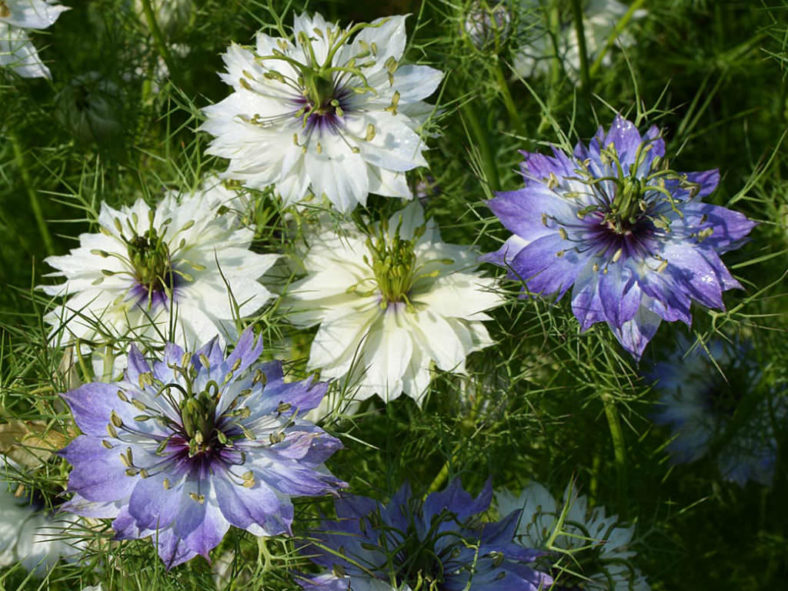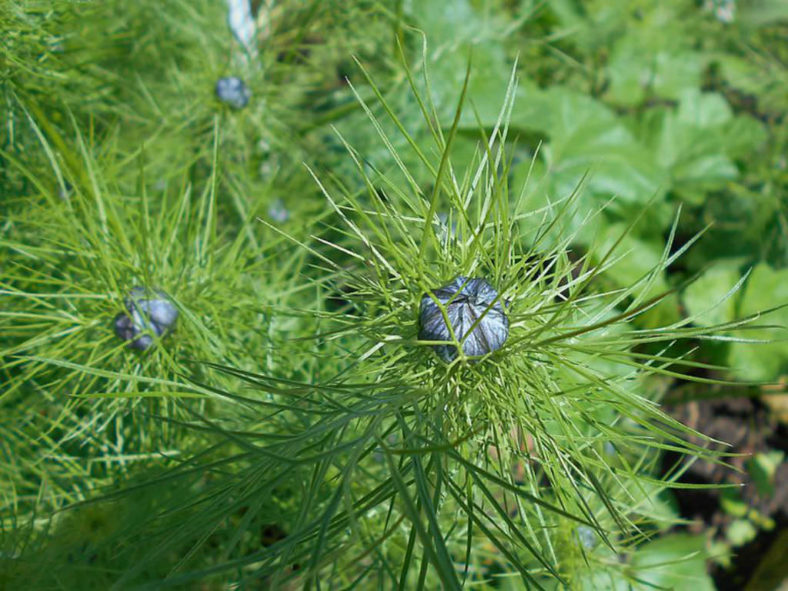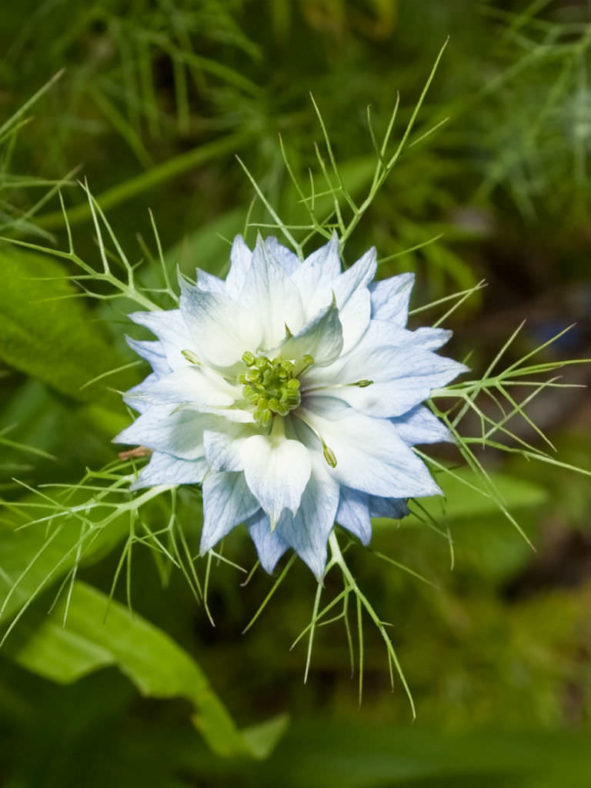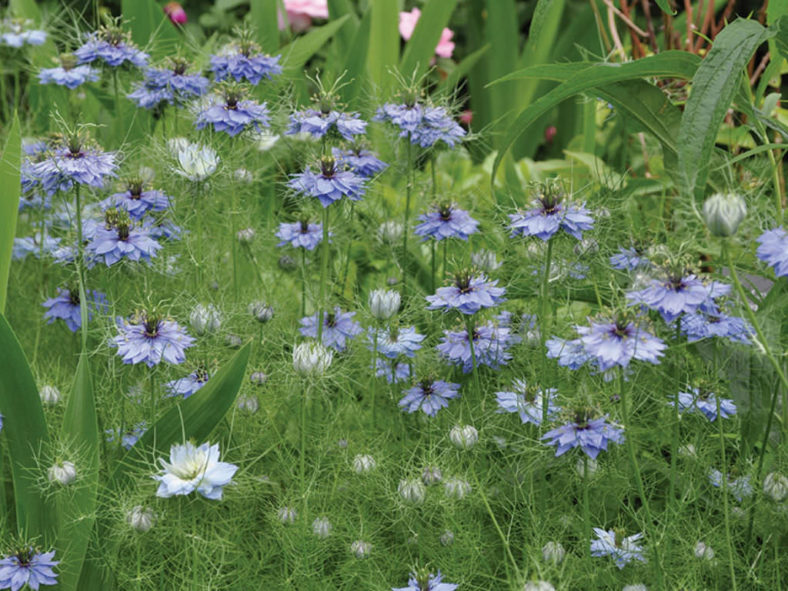Scientific Name
Nigella damascena L.
Common Name(s)
Love-in-a-mist, Ragged Lady, Devil-in-the-bush, Jack-in-the-green
Synonym(s )
Erobathos damascenum, Melanthium damascenum
Scientific Classification
Family: Ranunculaceae
Subfamily: Ranunculoideae
Tribe: Nigelleae
Genus: Nigella
Flower
Color: Blue, but can be white, pink, or pale purple
Bloom Time: Early summer
Description
Nigella damascena is an annual garden plant with alternate pinnately divided thread-like leaves. It grows up to 20 inches (50 cm) tall.
The flowers have 5 to 25 sepals and appear in early summer. They are usually in different shades of blue but can be white, pink, or pale purple. The actual petals are located at the base of the stamens and are minute and clawed. The sepals are the only colored part of the perianth. The 4 to 5 carpels of the compound pistil have an erect style. Fruits are large and inflated capsules growing from a compound ovary and composed of several united follicles containing numerous seeds. The capsule becomes brown in late summer.

Hardiness
It is grown as an annual plant, so it has no USDA hardiness zone.
How to Grow and Care
Sow Nigella sativa seeds when no risk of frost exists. Sprouts appear in one to two weeks and flowers in about two to three months later.
Test the soil pH with a home kit two to three months before the desired planting date to verify the pH is slightly acidic with a value of 6.0 to 7.0. Work ground rock sulfur into the soil to lower the pH if needed. Follow the package application rate based on the current pH.
Let the soil rest for two to three months to give the amendment time to change the pH. Work 2 to 3 inches (5 to 7.5 cm) of organic compost into the planting area to a depth of 8 to 10 inches (20 to 25 cm). Compost increases the nutrient value of the soil and is a natural fertilizer.
Sprinkle the Nigella sativa seeds lightly over the planting area. Sprinkle about 1/4 to 1/2 inch (8 to 13 mm) of soil over the seeds. Pat the soil gently to hold the seeds in place.
See more at How to Grow and Care for Nigella sativa.
Origin
Nigella damascena is native to southern Europe (but adventive in more northern countries of Europe), North Africa, and southwest Asia, where it is found on neglected, damp patches of land.
Cultivars
Links
- Back to genus Nigella
- Plantpedia: Browse flowering plants by Scientific Name, Common Name, Genus, Family, USDA Hardiness Zone, or Origin
Photo Gallery
Click on a photo to see a larger version.




